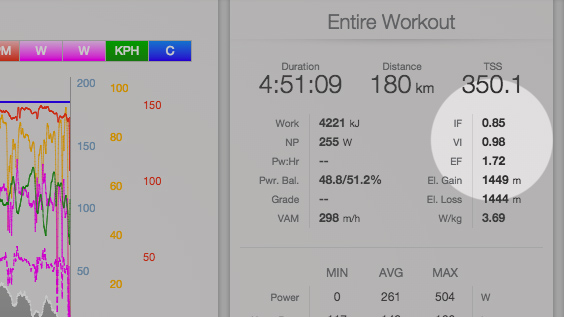One of the greatest challenges facing the modern coach is the growing amount of data that we are bombarded with. 25 years ago, our greatest problems were the difficulty and cost of obtaining data. When I first began my exercise physiology studies, I remember the big black box that was the Polar Sports Coach. It was an 800-dollar piece of kit that provided a real-life record of an athlete’s real-time heart rate data during their sports training or event. At the time, it was amazing, but times have certainly changed.
These days, we can not only get a record of heart rate in the field. We can also get:
- GPX coordinates
- Speed
- Power
- Temperature
- Cadence
- Stroke rate (swim)
- Stroke length (swim)
- Ground contact time (run)
- Vertical oscillation (run)
The list goes on.
Before, our problem was one of scarcity. Now it is one of abundance. So much data comes in for every workout that needs to be summarized and run through our filters to distill the truly meaningful, the truly important.
Make no mistake, as a coach in modern times, if you try to attend to every metric for every workout for every athlete, you will either have a very limited athlete roster, or you will lose your mind. These days, a large part of being an efficient and effective coach is about the efficient, selective handling of data.
Selective Data Analysis
Love it or hate it, data is here to stay and being a data scientist is an additional hat that a coach must wear. That is what this post is about, offering modern coaches some brief guidelines on determining, tracking, and managing the data that is truly important to performance and filtering and making actionable use of the mass of incoming training data in that context.
To begin the daunting task of making sense of data, it helps to, in the words of the late great Steven Covey, begin with the end in mind. For coaches, it is what numbers are important and common to those who race fast.
Three Key Metrics
As I said in the introduction, there are a lot of numbers made available to coaches by something as powerful as TrainingPeaks. For each file, some data will be more important than others. Below, I’ve circled three key metrics that I look at in race files that help to describe both the fitness of the athlete and the strategy that they used.

1. Efficiency Factor (EF) – An Indicator of Basic Aerobic Fitness
High-level endurance athletes are consistently aerobically fit! This is not an earth-shattering revelation, but an important one nonetheless. When setting goals, more important than knowing that high-level athletes are aerobically fit is to know how fit. Using EF helps to quantify that.
EF represents the Normalized Power® (NP®) of the athlete divided by their heart rate. Therefore, it assumes that more power generated on fewer heartbeats equals more fitness. This is a generally safe assumption, at least for a given athlete.
When EF is tracked concurrently with the athlete’s Chronic Training Load (CTL), we have the beginnings of a simple but powerful model of training ‘dose’ versus training ‘response’. We can then prescriptively implement that information when planning a training season to target new breakthrough levels of performance.
2. Intensity Factor® (IF®)– An Indicator of Specific Endurance
It’s one thing to be generally fit, it is another to be fit for a given task. It should not come as a surprise that IRONMAN athletes have different physiological strengths than athletes who specialize in sprint events. These different phenotypes for equally fit athletes can be expressed by the athlete’s IF and how it changes for the performance of different durations.
TrainingPeaks offers an easy way to visually chart and track this relationship in their Mean Maximal Power Curve. Athletes hoping to do well in long-duration events will need the ability to hold high percentages of their aerobic maximum for long periods of time, i.e. to have a relatively high IF.
3. Variability Index (VI) – An Indicator of How Evenly Paced the Effort Was
Not all power outputs yield the same result. There is a unique, optimal power distribution for every athlete and every course. The VI number helps us to quantify that and to test different distribution strategies to see which yields the best speed ‘bang’ per power ‘buck’ for a given course.
Obviously, different power distributions in a race will also have to trickle down to different power distributions in the training plan. If we decide that the optimal race strategy is for an athlete to hit a particular climb just below FTP, there had better be some climbing at this intensity in the training leading up to the event. In this way, descriptive analytics of a good athlete executing a good strategy become prescriptive analytics in formulating an optimal training plan.
By identifying target numbers for each of the above metrics, we can begin to design specific key benchmark workouts around each of the above objectives. As you may have guessed, we will stay focused on the objective at hand and filter the data that we get from these key workouts in the context of the particular metric that we are targeting.










